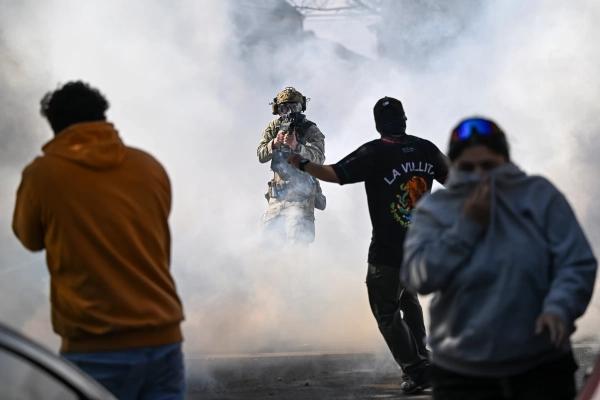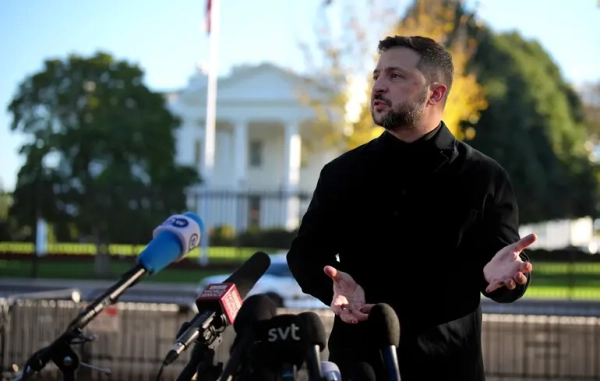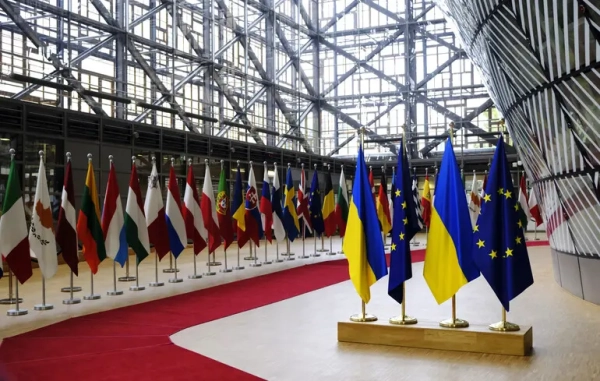“`html 
You’ve likely come across recordings depicting Immigration and Customs Enforcement (ICE), along with other national law enforcement organizations, assaulting immigrants and defenseless Americans objecting to President Donald Trump’s policies on immigration. One shows officers shooting a clergyman in the cranium using a pepper ball. In another, an officer discharges pepper spray squarely into the ventilation of a demonstrator sporting an inflatable amphibian outfit — in a clear effort to saturate the getup with harmful fumes.
The abuse of immigrants, protesters, and those Trump deems adversaries by this administration appears to be widespread. An August report from the office of Sen. Jon Ossoff (D-GA) pinpointed 510 “reliable accounts” of breaches of human rights in immigrant detention centers ever since Trump entered office in January. ProPublica revealed that upwards of 170 US citizens were detained by immigration personnel, and some sustained beatings or harsher treatment.
SCOTUS, Explained
Obtain the most recent news regarding the US Supreme Court from senior correspondent Ian Millhiser.
Email (required)Sign UpBy submitting your email, you agree to our Terms and Privacy Notice. This site is protected by reCAPTCHA and the Google Privacy Policy and Terms of Service apply.
Even highly positioned elected figures are affected. For instance, last May, national law enforcement officers forcibly took Newark Mayor Ras Baraka (D) into custody following Baraka’s attempt to tour an immigration detention complex. Following the dismissal of those accusations, the Trump administration indicted US Rep. LaMonica McIver (D-NJ), who tried to protect Baraka from being arrested. An officer in a recording mentioned by McIver’s lawyers asserts that US Deputy Attorney General Todd Blanche instructed Baraka’s detention.
Making matters worse, the Supreme Court — or, at a minimum, its six Republicans — seems to entirely endorse these methods. In September, the Republican magistrates chose to obstruct a ruling from a lower court that, among other restrictions, prohibited ICE from singling out suspected undocumented immigrants solely based on their ethnicity. That instance is known as Noem v. Vasquez Perdomo.
Related
- The ample proof indicating the Supreme Court favors Donald Trump
Republican judges rarely provide reasons when they rule for Trump, though Justice Brett Kavanaugh penned a concurring opinion detailing his reasoning for his vote. His declaration that the “apparent ethnicity” of an ICE target was “relevant” to law enforcement determining who to halt has garnered significant interest, as Kavanaugh seemingly disregarded concerns about national law enforcement targeting Latinos due to their race. However, Kavanaugh also inferred strongly that no individual subjected to ICE’s actions may pursue an injunction to restrict ICE from utilizing unlawful strategies later on. (Post this verdict, many observers now refer to ICE’s strategies as “Kavanaugh stops.”)
Thus, are there any authorized means left to contest mistreating tactics by ICE or other law enforcement agencies overseen by Trump? In brief, there are a handful of restricted avenues open, though they are unlikely to impose significant limitations on ICE’s conduct.
Generally, there are five methods by which the law could restrict national law enforcement:
- A national tribunal might issue a directive against a law enforcement entity, preventing it from pursuing a specific illicit activity. However, Kavanaugh’s opinion in Vasquez Perdomo implies that this Supreme Court will not permit any such directive to remain effective.
- A tribunal might instruct a given law enforcement official to recompense the victim of the official’s illegal action. The Republican magistrates, however, have substantially diminished this pathway through a pair of decisions rendered in the last five years.
- An individual harmed by unlawful behavior from a national law enforcement officer might file suit against the United States, pursuing damages. The Supreme Court’s unanimous decision in Millbrook v. United States (2013) suggests that this route stays accessible — although it is implausible that either Trump or any individual official will adjust their actions for fear that the US Treasury might have to disburse funds sometime down the line.
- A law enforcement officer, or perhaps a top law enforcement administrator, might undergo criminal prosecution. Such legal action would hinge on an existing criminal law already forbidding the officer’s activity (or possibly forbidding a senior official’s directive to an officer). Furthermore, it’s improbable that any of these prosecutions will materialize while Trump oversees the Justice Department.
- Finally, up until recently, Trump himself could have faced prosecution had he given a directive that contravenes national criminal law. Yet, the Republican magistrates granted Trump expansive protection from prosecution in Trump v. United States (2024).
Let’s examine each of these choices in finer detail.
“Kavanaugh stops,” and injunctions against law enforcement
Securing a court order that stops a law enforcement agency from conducting future unlawful behavior is remarkably challenging; this has been the case for more than four decades. The key case is City of Los Angeles v. Lyons (1983), which ruled that Adolph Lyons, a man allegedly subjected to a chokehold by police officers without provocation, could not attain a court ruling barring the Los Angeles Police Department from employing similar chokeholds moving forward.
Lyons asserted that “past exposure to illegal conduct” does not enable a person to pursue an injunction to prevent related conduct afterward. Alternatively, the Court reasoned that “Lyons’ standing to pursue the injunction requested relied on whether he was apt to suffer subsequent harm from police officers’ use of chokeholds.”
Put differently, Lyons had to substantiate that he, personally, was at risk of being choked once more, sometime down the line, by a Los Angeles police officer.
Kavanaugh contended in Vasquez Perdomo that the plaintiffs’ argument challenging ICE’s actions in that case “largely follows the argument invalidated in Lyons.” The plaintiffs in Vasquez Perdomo alleged that ICE stopped them for unacceptable causes, including their Latino identity. However, Kavanaugh argued they possess “no solid grounds to think law enforcement will unlawfully stop them down the road based on the banned factors.”
Factually, Kavanaugh’s assertion is questionable. A national appeals court determined that “at least one person with legal status was stopped twice by mobile patrols in a mere 10 days.” Therefore, ICE singling out that one person twice in a short duration implies the likelihood of being targeted anew without court intervention. The Trump administration also repetitively zeroed in on certain establishments where they believed undocumented individuals worked — one car wash endured four visits in nine days, as per Justice Sonia Sotomayor’s dissent. Consequently, it seemed the workers at that car wash were likely targets in the future.
Ultimately, however, the true facts underpinning a Supreme Court case are less significant than the justices’ interpretation of those facts. The Court’s judgment in Vasquez Perdomo and Kavanaugh’s dependence on Lyons to justify that decision imply this Court is unlikely to permit anyone illegally singled out by ICE to seek an injunction against that agency — even if, in effect, these exact judgments permit the Trump administration to repeatedly target the same individuals.
The death of Bivens: Why ICE officers can no longer be sued for breaking the law
Over a half-century ago, in Bivens v. Six Unknown Named Agents of Federal Bureau of Narcotics (1971), the Supreme Court decreed that an individual subjected to unlawful action by a federal law enforcement officer could sue that officer, potentially securing monetary compensation directly from them. Bivens made clear that an officer acting unlawfully “under the authority of the United States has a far greater capacity for harm than an individual trespasser exercising no authority other than his own.” Therefore, there should be a meaningful path to discourage officers from abusing their authority.
However, a majority of judges has long since opposed this accountability standpoint. The Court’s Republican members have nearly overturned Bivens completely in two recent cases.
Related
- The Supreme Court provides lawsuit immunity to Border Patrol agents who violate the Constitution
The Republican justices ruled in Hernández v. Mesa (2020) that a US Border Patrol agent who allegedly gunned down a 15-year-old Mexican boy in cold blood could not be sued, even if the boy’s parents could demonstrate the shooting was unprovoked. In Egbert v. Boule (2022), the Republican magistrates safeguarded Border Patrol agents accused of using excessive force against an innkeeper from lawsuits.
Both decisions were intensely adverse to Bivens. For instance, Justice Clarence Thomas’s majority opinion in Egbert determined that courts should reject Bivens suits if “any rational reason (even one)” exists for doing so.
Given these judgments, it’s reasonable to suggest the current group of magistrates will not allow an ICE officer to be sued by their victim, even with clear officer breaches of law or the Constitution.
Suits against the United States: A weak, but still viable, remedy
The Federal Tort Claims Act generally enables suing the United States if a federal law enforcement officer engages in “assault, battery, false imprisonment, false arrest, malicious prosecution, abuse of process, libel, slander, misrepresentation, deceit, or interference with contract rights.” The Supreme Court took a relatively broad perspective on this law’s application to harmful acts by law enforcement in its unanimous judgment in Millbrook v. United States (2013), relating to a prisoner suing corrections officers who allegedly threatened and sexually assaulted him.
Thus, it’s conceivable even this Supreme Court would permit certain victims of illegal activities by ICE, or like agencies, to sue the federal government, seeking recompense from the United States Treasury.
That said, it’s doubtful this solution will do much to dissuade future illegal behavior by ICE. Neither an individual law enforcement officer, nor senior Trump administration officials issuing their commands, are likely to adjust their actions based on the possibility that, approximately a year from now, a federal judge might instruct the US Treasury to compensate someone victimized by ICE.
Bivens primarily aimed to place personal consequences on rogue officers, dissuading them from breaking the law. A lawsuit that requires US taxpayers to compensate victims likely will not accomplish the same aim.
Criminal prosecutions: Maybe in the next administration?
Finally, if a given law enforcement officer infringes upon a federal criminal statute, prosecution might follow. This is particularly unlikely, though, while Trump governs the Justice Department. Any future legal proceedings will likely depend on the victor of the 2028 election.
Nonetheless, Donald Trump is one individual exempt from criminal repercussions, regardless of the number of laws he breaks. The Republican justices’ judgment in Trump v. United States (2024) stated that Trump is immune from legal action for his official acts as president. The decision even stipulated immunity when he orders law enforcement to target an individual “for an improper purpose.”
Moreover, should some law enforcement officer — or perhaps some Trump political appointee — undergo prosecution for unlawful acts, the same Republican judges who invented presidential immunity might also decide to immunize officers enacting Trump’s orders. Trump could also employ his power of pardon to safeguard them.
So, should you aspire to see ICE officers and other federal figures who have abused their authority held accountable for their actions, the outlook is unfavorable. The Supreme Court has limited the most efficient strategies for ensuring federal law enforcement officers adhere to the law.
“`
Source: vox.com






